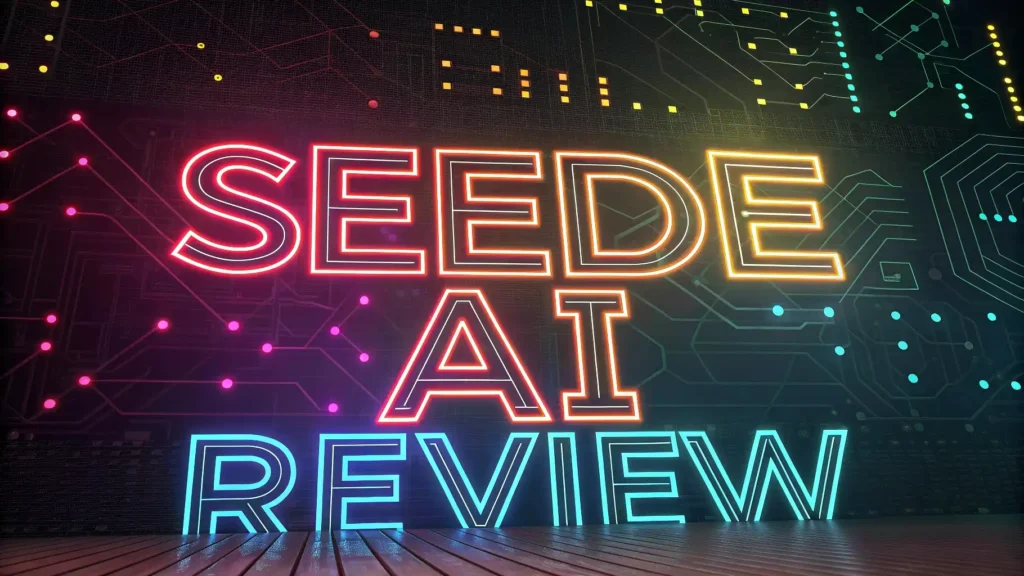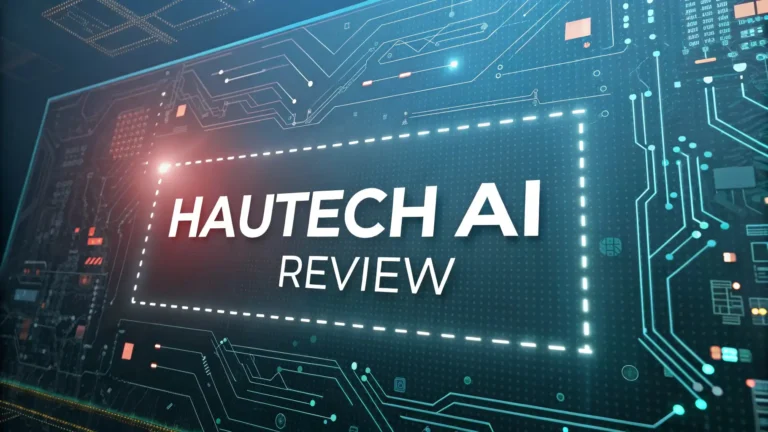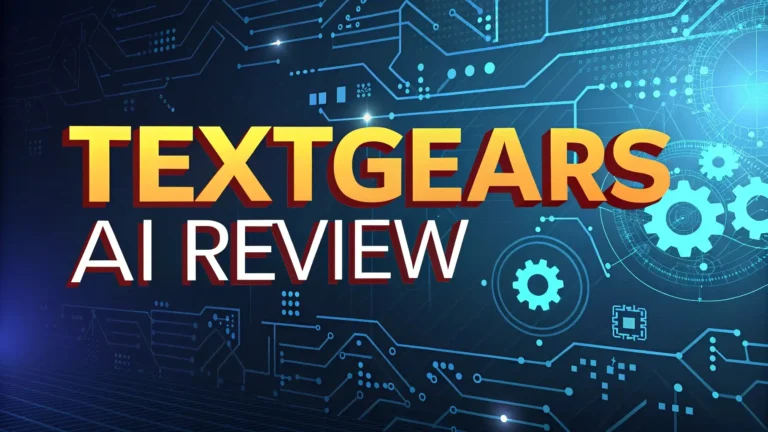Seede AI Review 2025: Guide to AI-Powered Design Platform
Creating stunning visual content has never been easier thanks to artificial intelligence design tools. Seede AI stands out as a next-generation platform that promises to transform anyone into a professional designer within 60 seconds. This comprehensive review examines everything you need to know about Seede AI in 2025.
The world of design has evolved dramatically with AI integration. Traditional design processes that once required hours of work can now be completed in minutes. Seede AI represents this evolution perfectly by offering AI-powered design generation that eliminates the learning curve associated with complex design software.
Key Takeaways
- Instant Design Creation: Generate professional-quality social media posts, marketing materials, and graphics in under 60 seconds using AI-powered automation
- No Design Experience Required: The platform serves as an AI copilot that guides users through the design process without requiring prior knowledge or skills
- Flexible Credit-Based Pricing: Pay-as-you-go model with credits starting at $1.39 for 20 credits, making it accessible for both individuals and businesses
- Multiple Input Methods: Create designs from text descriptions or upload reference images for customized outputs that match your vision
- Comprehensive Tool Suite: Includes background removal, image upscaling, watermark-free HD export, and magic eraser functionality in one platform
- Beta Pricing Advantage: Current pricing represents beta testing rates that may increase as features expand and the platform matures

What Is Seede AI and How Does It Work
Seede AI functions as an artificial intelligence-powered design platform that transforms ideas into professional visuals instantly. The platform operates on a simple premise: users input their requirements either through text descriptions or reference images, and the AI generates appropriate designs.
The system works by analyzing your input and applying machine learning algorithms to create visually appealing content. Text-to-design capabilities allow users to describe what they want, while image-to-design features let you upload reference materials for customization.
The platform serves multiple user types effectively. Content creators benefit from rapid social media post generation. Marketing professionals can produce campaign materials quickly. Small business owners gain access to professional-grade designs without hiring expensive designers.
One-click design generation sets Seede AI apart from competitors. Traditional design software requires multiple steps and technical knowledge. Seede AI compresses this process into a single action that produces publication-ready results.
The AI assistance extends beyond basic generation. The platform includes intelligent editing suggestions, automatic optimization, and style recommendations based on current design trends and best practices.
Core Features and Capabilities Analysis
Seede AI offers an impressive array of features designed to meet diverse design needs. AI-assisted editing forms the foundation of the platform, providing intelligent suggestions and automatic improvements to user-generated content.
Creative templates serve as starting points for various design projects. These templates cover social media posts, marketing materials, presentations, and personal projects. Each template can be customized extensively while maintaining professional quality standards.
Background removal tools eliminate the need for separate photo editing software. Users can isolate subjects from images instantly, creating clean compositions for their designs. This feature proves particularly valuable for product photography and professional headshots.
Image generation capabilities allow users to create original visuals from scratch. The AI produces images based on text descriptions, offering unlimited creative possibilities without relying on stock photography.
Image upscaling enhances low-resolution images to high-quality outputs suitable for print and digital use. This feature saves money on stock photography while maintaining professional standards.
Magic eraser functionality removes unwanted elements from images seamlessly. Users can clean up backgrounds, eliminate distractions, and perfect their compositions with minimal effort.
The platform also includes video conversion tools that transform landscape videos into portrait format, essential for social media optimization across different platforms.
Pricing Structure and Value Proposition
Seede AI operates on a credit-based pricing model that offers flexibility for different usage patterns. The current beta pricing provides exceptional value, though prices may adjust as the platform matures.
The 20 AI Credits Pack costs $1.39 and includes basic features, access to all design tools, image optimization, background removal, and standard customer support. Credits never expire, making this option suitable for occasional users.
The 50 AI Credits Pack represents the most popular choice at $2.99 (regularly $3.99 with 25% discount). This package includes advanced features, watermark-free HD export, and priority customer support. The enhanced features justify the price increase for regular users.
The 300 AI Credits Pack offers the best value at $13.96 (regularly $19.95 with 30% discount). This option suits heavy users, agencies, and businesses requiring consistent design output. The bulk pricing provides significant cost savings per credit.
No monthly subscription requirements eliminate ongoing financial commitments. Users purchase credits as needed, providing budget control and flexibility. This approach contrasts favorably with subscription-based competitors that charge monthly fees regardless of usage.
The beta pricing disclaimer indicates current rates represent testing phase pricing. Early adopters benefit from lower costs while helping refine the platform. Future price adjustments seem likely as features expand and the user base grows.
User Interface and Experience Evaluation
The Seede AI interface prioritizes simplicity and accessibility over complex functionality. New users can navigate the platform without tutorials or extensive onboarding processes. This design philosophy aligns with the platform’s goal of democratizing professional design.
Drag-and-drop functionality streamlines the design process. Users can upload images, move elements, and make adjustments intuitively. The interface responds quickly to user inputs, maintaining workflow momentum.
Template browsing offers organized categories that help users find appropriate starting points quickly. Search functionality allows users to locate specific design styles or themes efficiently.
Real-time preview capabilities show changes instantly as users make adjustments. This immediate feedback loop reduces revision cycles and improves user satisfaction.
The platform includes progress indicators during AI processing, keeping users informed about generation status. Processing times typically range from 30 to 60 seconds, meeting the platform’s speed promises.
Export options provide multiple file formats suitable for different use cases. Users can download designs in formats optimized for web use, print applications, or social media platforms.
Mobile responsiveness ensures the platform functions effectively across devices. Users can create and edit designs from smartphones and tablets, though desktop use provides the optimal experience.
AI Technology and Performance Assessment
The artificial intelligence engine powering Seede AI demonstrates impressive capability in understanding user intent and generating appropriate visual responses. The system analyzes text inputs effectively, translating descriptions into relevant design elements.
Machine learning algorithms improve output quality based on user interactions and feedback. The platform learns from successful designs and incorporates these insights into future generations.
Processing speed consistently meets the 60-second promise for most design requests. Complex designs with multiple elements may require additional time, but performance remains acceptable for professional use.
Output quality varies depending on input specificity and design complexity. Well-defined requests produce superior results compared to vague descriptions. Users achieve best results by providing detailed, specific instructions.
Style consistency maintains visual coherence across design elements. The AI understands design principles like color harmony, typography pairing, and spatial relationships.
Error handling manages unclear inputs gracefully, often requesting clarification rather than producing inappropriate results. This approach prevents wasted credits and user frustration.
The learning capability of the platform shows promise for future improvements. As more users interact with the system, output quality and understanding should continue improving.
Comparison with Competitor Platforms
Seede AI versus Canva reveals interesting contrasts in approach and functionality. Canva offers more templates and design elements, while Seede AI provides superior AI-powered generation capabilities. Canva’s subscription model differs from Seede AI’s credit system.
Microsoft Designer comparison shows similar AI integration but different target markets. Microsoft Designer integrates with Office applications, while Seede AI operates as a standalone platform. Both offer professional-quality outputs with varying strengths.
Comparison with Adobe Express highlights feature depth differences. Adobe Express provides more advanced editing tools, while Seede AI emphasizes speed and simplicity. Pricing models differ significantly between the platforms.
Figma versus Seede AI represents different design philosophies. Figma targets professional designers with collaboration features, while Seede AI serves general users seeking quick results.
The competitive landscape shows Seede AI’s unique positioning as a rapid, AI-first design platform. Competitors often add AI features to existing tools, while Seede AI builds everything around artificial intelligence capabilities.
Value proposition comparison favors Seede AI for users prioritizing speed and simplicity. Traditional design platforms offer more control but require greater time investment and skill development.
Target Audience and Use Cases
Small business owners represent a primary target audience for Seede AI. These users need professional marketing materials but lack design budgets or expertise. The platform provides cost-effective access to quality designs.
Social media managers benefit from rapid content creation capabilities. The platform’s speed enables consistent posting schedules without extensive design resources. Template variety supports diverse content strategies.
Content creators use Seede AI for thumbnails, social posts, and promotional materials. The platform’s efficiency allows creators to focus on content development rather than design work.
Marketing professionals appreciate the platform’s ability to produce campaign materials quickly. Rapid iteration capabilities support testing different design approaches without significant time investment.
Entrepreneurs launching new ventures use Seede AI for branding materials, presentations, and marketing collateral. The platform provides professional quality without requiring design agency investment.
Educational users benefit from the platform’s accessibility for creating presentations, infographics, and visual aids. Teachers and students can produce engaging materials easily.
Non-profit organizations with limited budgets find value in Seede AI’s cost-effective approach to professional design. The platform enables quality promotional materials without strain on tight budgets.
Strengths and Advantages Overview
Speed of execution stands as Seede AI’s primary strength. The 60-second design promise consistently delivers results that would require hours using traditional methods. This efficiency transforms productivity for regular users.
Accessibility for beginners removes barriers that prevent non-designers from creating professional content. The AI guidance system enables anyone to produce quality results without technical knowledge.
Cost-effectiveness provides exceptional value compared to hiring designers or purchasing expensive software. The credit system allows users to pay only for actual usage rather than monthly subscriptions.
No software installation requirements enable immediate access from any device with internet connectivity. Users avoid storage concerns and compatibility issues associated with traditional design software.
Consistent quality maintains professional standards across all outputs. The AI ensures designs follow established principles even when users lack design knowledge.
Template variety covers diverse use cases from social media to business presentations. Users find appropriate starting points for most design projects.
Export flexibility supports multiple file formats and resolution options. Users can optimize outputs for specific platforms and use cases effectively.
Limitations and Areas for Improvement
Limited customization options restrict users who need extensive design control. The platform prioritizes simplicity over comprehensive editing capabilities. Advanced users may find the tool set insufficient for complex projects.
AI interpretation variations can produce unexpected results when input descriptions lack clarity. Users must learn to communicate effectively with the AI system to achieve desired outcomes.
Beta stage limitations mean some features remain under development. Users may encounter occasional bugs or performance issues during platform evolution.
Credit consumption can become expensive for heavy users. While individual credits cost little, extensive usage may exceed traditional software subscription costs.
Limited brand consistency tools make it challenging to maintain visual identity across multiple designs. Users must manually ensure brand compliance without automated systems.
Processing dependencies require internet connectivity for all functions. Users cannot work offline or during connectivity issues.
Style limitations may not accommodate all aesthetic preferences. The AI tends toward contemporary design trends that may not suit all brand requirements.
Getting Started Guide and Best Practices
Account creation begins with visiting the Seede AI website and completing registration. The process requires basic information and email verification. New users receive introductory credits to explore platform capabilities.
First design creation should start with template exploration to understand available options. Select a template that closely matches your intended design to minimize required modifications.
Effective prompting improves AI output quality significantly. Use specific, descriptive language when requesting designs. Include details about color preferences, style requirements, and intended use.
Template customization allows personalization while maintaining professional quality. Modify text, colors, and images to match your brand and message requirements.
Credit management requires monitoring usage to avoid unexpected depletion. Plan design projects and purchase appropriate credit packages based on anticipated needs.
Export optimization should consider final use cases. Select appropriate file formats and resolutions for web, print, or social media applications.
Iterative improvement works better than expecting perfect results immediately. Use the platform’s editing tools to refine initial outputs rather than starting over.
Integration Capabilities and Workflow
Workflow integration with existing processes requires consideration of file formats and export options. Seede AI supports standard formats compatible with most marketing and content management systems.
Social media integration works through manual download and upload processes. The platform doesn’t offer direct posting capabilities to social platforms, requiring additional steps for content distribution.
Brand asset management relies on user organization since the platform lacks centralized brand libraries. Users must maintain consistent color schemes and fonts manually across projects.
Team collaboration remains limited compared to dedicated collaboration platforms. Multiple users can access the same account, but simultaneous editing and version control require external coordination.
API availability information wasn’t clearly documented, suggesting limited programmatic integration options. Businesses requiring automated workflows may need alternative solutions.
File management occurs primarily through local downloads rather than cloud storage integration. Users must organize completed designs using external file management systems.
Scalability considerations become important for growing businesses. The credit system scales with usage, but workflow efficiency may require additional tools for high-volume operations.
Customer Support and Resources
Support options vary by subscription level, with basic users receiving standard support and premium users getting priority assistance. Response times and support quality can impact user experience significantly.
Documentation availability appears limited based on available information. Users may need to rely on trial and error or community resources for advanced techniques.
Tutorial resources help new users understand platform capabilities and best practices. The availability and quality of educational materials affect user success rates.
Community support through forums or user groups can supplement official support channels. Peer assistance often provides practical tips and creative inspiration.
Bug reporting systems allow users to contribute to platform improvement. Responsive handling of user feedback indicates commitment to platform quality.
Feature requests mechanisms enable user input on platform development. Active consideration of user suggestions suggests user-focused development priorities.
Update communications keep users informed about new features and improvements. Regular communication builds user confidence and engagement.
Security and Privacy Considerations
Data protection policies should address user content security and privacy. Design files and user information require appropriate safeguards against unauthorized access.
Copyright compliance becomes important when using AI-generated content. Users should understand ownership rights and usage restrictions for created designs.
Content moderation systems prevent inappropriate or harmful content generation. These safeguards protect both users and the platform from legal and ethical issues.
Payment security through established processing systems protects user financial information. Credit card and payment data should receive industry-standard protection.
Account security features like two-factor authentication enhance user account protection. Strong security measures prevent unauthorized access and credit theft.
Usage tracking for optimization purposes should balance improvement benefits with privacy protection. Transparent policies help users understand data collection practices.
Export security ensures downloaded files don’t contain hidden metadata or tracking elements. Clean file exports protect user privacy and professional requirements.
Final Verdict and Recommendations
Seede AI delivers on its promise of rapid, professional-quality design creation for users without extensive design experience. The platform successfully democratizes design capabilities while maintaining output quality standards.
Best suited users include small business owners, content creators, marketing professionals, and anyone needing regular design output without design expertise. The platform excels for users prioritizing speed and simplicity over extensive customization.
Value proposition remains strong, particularly during the beta pricing period. The credit system provides cost control while delivering professional results that would cost significantly more through traditional design services.
Limitations exist primarily around advanced customization and brand consistency tools. Users with complex design requirements or extensive brand guidelines may need supplementary tools.
Recommendation: Seede AI earns a strong recommendation for its target audience. The platform delivers exceptional value for rapid design creation, though users should understand its limitations and plan accordingly. The beta pricing makes current entry particularly attractive for exploring AI-powered design capabilities.
Future potential suggests continued improvement and feature expansion. Early adoption provides cost advantages while supporting platform development. Users comfortable with evolving platforms will find significant value in Seede AI’s current offering.
Frequently Asked Questions
How much does Seede AI cost per design?
The cost per design depends on your credit package and design complexity. With the 300-credit pack ($13.96), each credit costs approximately $0.05. Simple designs typically use 1-2 credits, making the cost per design very affordable compared to hiring designers or using expensive software.
Can I use Seede AI for commercial purposes?
Yes, Seede AI designs can be used for commercial purposes including marketing materials, social media posts, and business presentations. However, users should review the platform’s terms of service for specific usage rights and any restrictions on commercial applications.
Does Seede AI work offline?
No, Seede AI requires internet connectivity for all functions since the AI processing occurs on cloud servers. All design generation, editing, and export functions need active internet connection. Users cannot access the platform or create designs while offline.
How long do credits last in Seede AI?
Credits purchased in Seede AI never expire, providing excellent value for occasional users. You can buy credits and use them months later without losing value. This approach differs from subscription models that charge monthly regardless of usage.
What file formats can I export from Seede AI?
Seede AI supports multiple export formats including PNG, JPG, and PDF options optimized for different use cases. Users can select formats appropriate for web use, print applications, or social media platforms. Higher-tier packages include watermark-free HD export options.
Is there a free trial available for Seede AI?
While specific free trial information varies, the platform offers very affordable entry points with the 20-credit pack at $1.39. This low-cost option effectively serves as a trial, allowing users to test platform capabilities before committing to larger credit packages.
Can I collaborate with team members on Seede AI?
Current collaboration features appear limited compared to dedicated team design platforms. Multiple users can access the same account, but simultaneous editing and advanced collaboration tools may require external coordination or supplementary platforms for team projects.
How does Seede AI compare to Canva?
Seede AI focuses on AI-powered rapid generation while Canva offers more templates and manual editing options. Seede AI excels in speed and AI assistance, while Canva provides more comprehensive design tools. The choice depends on whether you prioritize speed or editing control.







